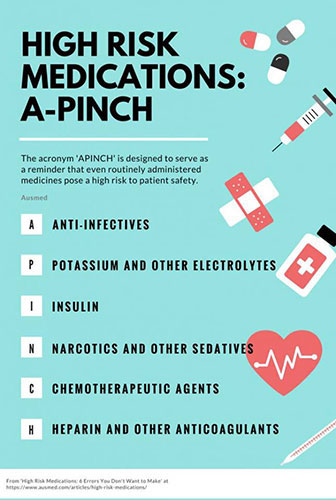
In her article titled “Medication Errors to Watch For – 6 High Risk Medications” Anne Leversha, a Senior Lecturer at Monash University, highlights the dangers involved with administering high risk medications, which for most nurses are part of their daily routines. Anne suggests the APINCH acronym should be used as a reminder of which medicines pose a high risk to patients.
A – Anti-infectives (e.g. Antibiotic)
P – Potassium and other electrolytes (e.g. Potassium Chloride)
I – Insulin (e.g. Insulin)
N – Narcotics and other sedatives (e.g. Morphine)
C – Chemotherapeutic ages (e.g. Gentamycin)
H – Heparin and other anticoagulants (e.g. Heparin)
Most importantly Anne explains what can happen when these medicines are administered incorrectly. This is the kind of information that motivates us here at Mermed to find solutions and techniques to help medical staff avoid these unfortunate errors. Comments left on the article by nurses in the field note that this issue is one that needs to be addressed. One particular comment from Vanessa captures the crux of the matter.
“…a little bit wrong.. a little bit dead. It’s kind of awful but it’s a reality check.”
We couldn’t have said it better, and it’s the reason we make our labels to current standards that highlight types of medicines so they are easy to recognise.
If any nurses have ideas that might limit these kinds of errors, we’d love to hear them.


